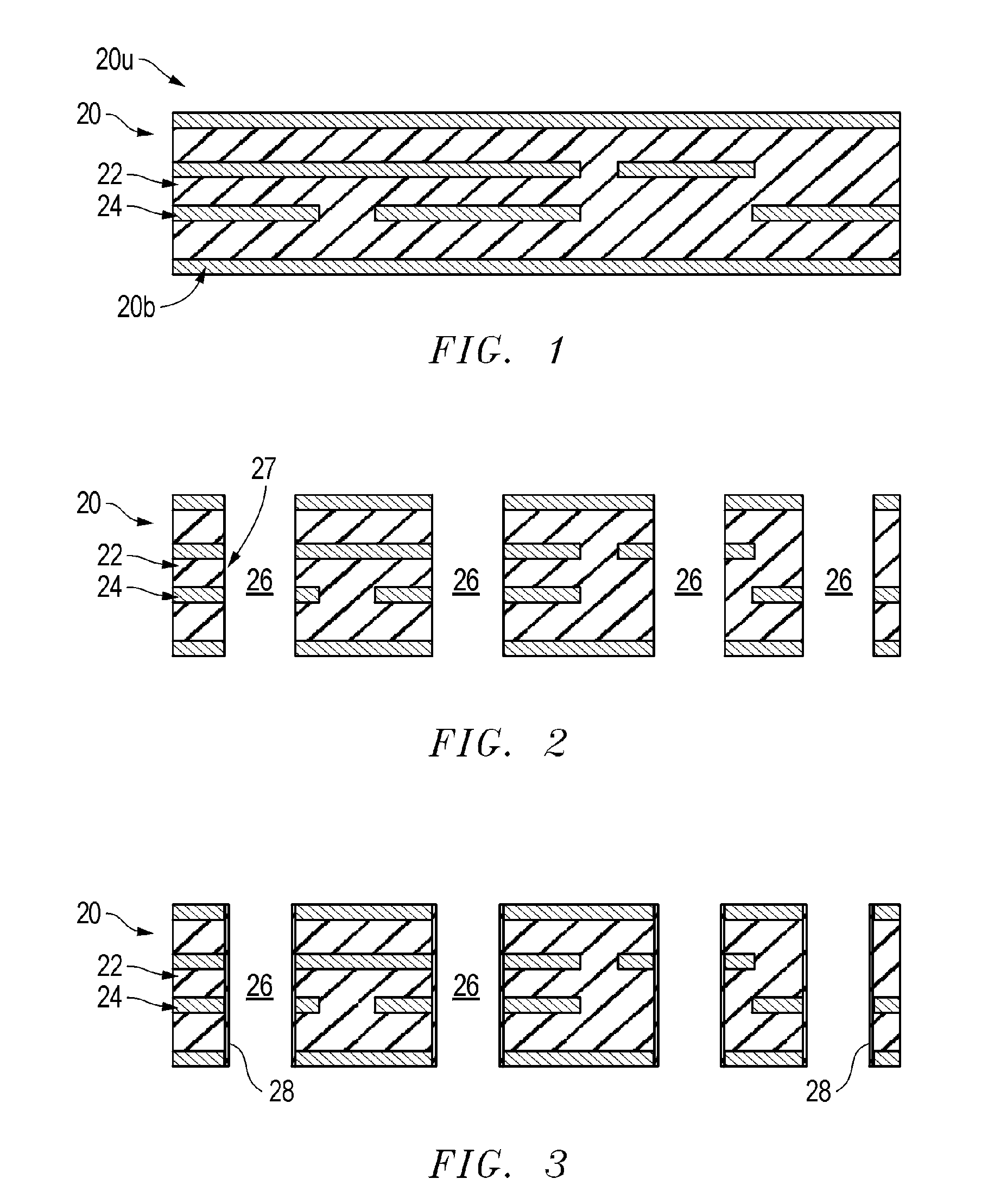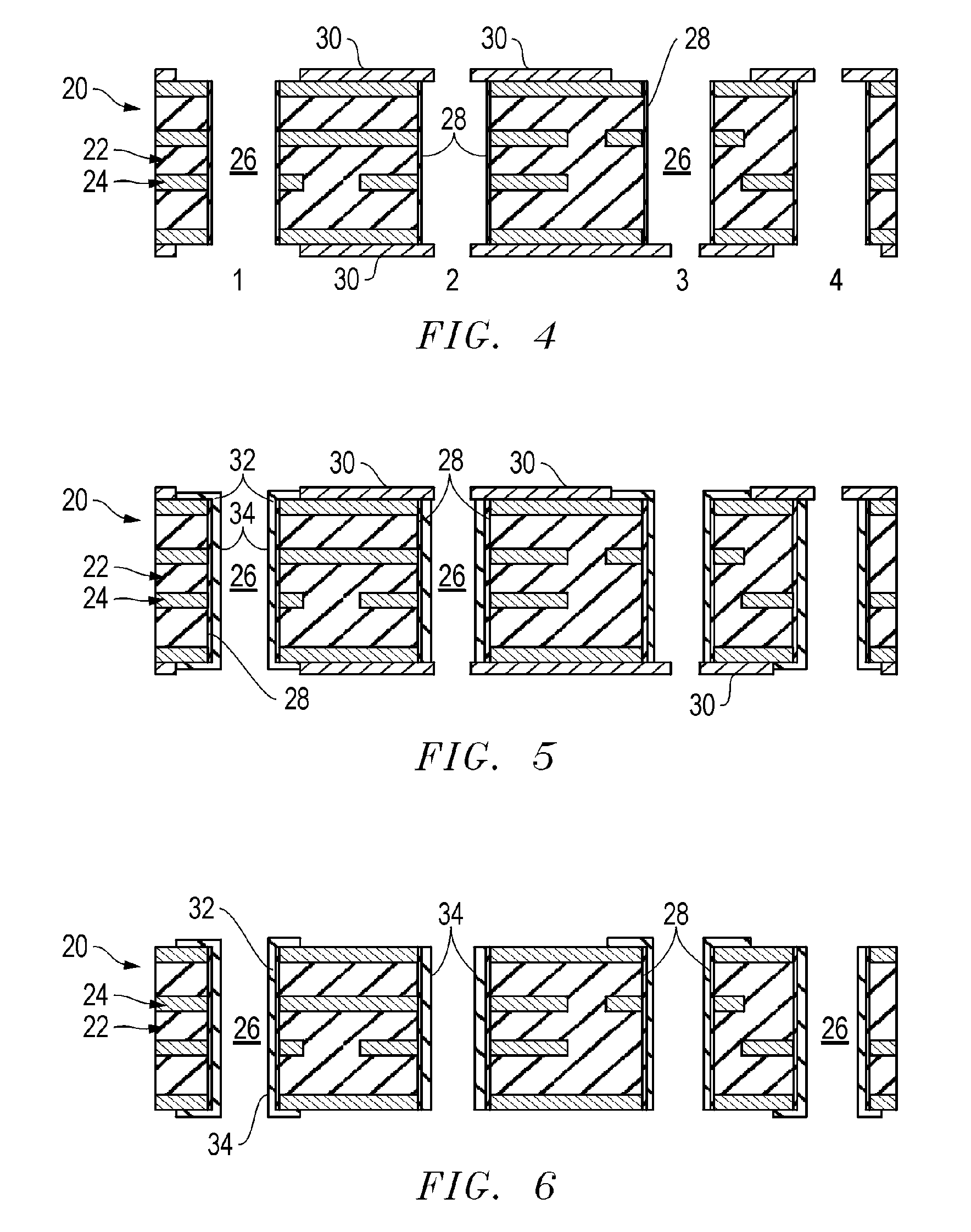Controlled depth etched vias
a control depth and via technology, applied in the direction of printed circuits, printed circuit details, printed circuits, etc., can solve the problems of time-consuming and expensive controlled depth drilling or mechanical milling, parasitic signal loss reduction, etc., to minimize parasitic signal loss, minimize process steps, and reduce parasitic signal loss
- Summary
- Abstract
- Description
- Claims
- Application Information
AI Technical Summary
Benefits of technology
Problems solved by technology
Method used
Image
Examples
Embodiment Construction
[0017] So that the manner in which the above recited features, advantages and objects of the present invention are attained can be understood in detail, more particular description of the invention, briefly summarized above, may be had by reference to the embodiment thereof that is illustrated in the appended drawings. In all the drawings, identical numbers represent the same elements.
[0018] For illustrative purposes a simple four-layer printed circuit board (PCB) type product 20 will be described. The disclosed method can be used for multiple layers of PCB product 20. For example the four-layer product 20 may be a subset or sub-lamination of a thicker PCB.
[0019] 1. Generally, the desired layers of dielectric material 22, a conductive material 24, such as copper, or other desired component materials or layers are laminated together using a known technique to form the base for the product 20 having an upper surface 20u and a lower surface 20b. Note that this could be a sub-laminati...
PUM
 Login to View More
Login to View More Abstract
Description
Claims
Application Information
 Login to View More
Login to View More - R&D
- Intellectual Property
- Life Sciences
- Materials
- Tech Scout
- Unparalleled Data Quality
- Higher Quality Content
- 60% Fewer Hallucinations
Browse by: Latest US Patents, China's latest patents, Technical Efficacy Thesaurus, Application Domain, Technology Topic, Popular Technical Reports.
© 2025 PatSnap. All rights reserved.Legal|Privacy policy|Modern Slavery Act Transparency Statement|Sitemap|About US| Contact US: help@patsnap.com



